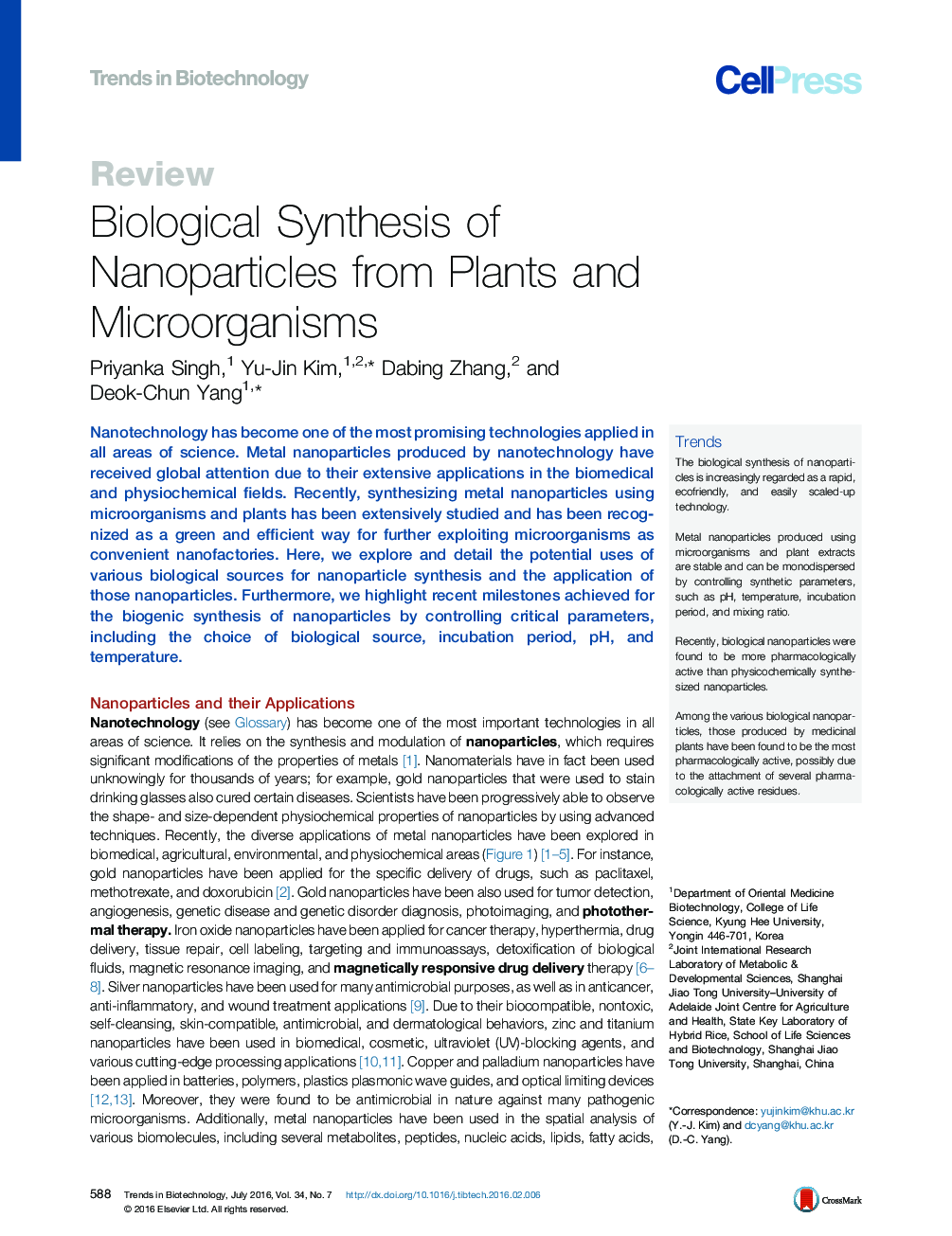| Article ID | Journal | Published Year | Pages | File Type |
|---|---|---|---|---|
| 36810 | Trends in Biotechnology | 2016 | 12 Pages |
Nanotechnology has become one of the most promising technologies applied in all areas of science. Metal nanoparticles produced by nanotechnology have received global attention due to their extensive applications in the biomedical and physiochemical fields. Recently, synthesizing metal nanoparticles using microorganisms and plants has been extensively studied and has been recognized as a green and efficient way for further exploiting microorganisms as convenient nanofactories. Here, we explore and detail the potential uses of various biological sources for nanoparticle synthesis and the application of those nanoparticles. Furthermore, we highlight recent milestones achieved for the biogenic synthesis of nanoparticles by controlling critical parameters, including the choice of biological source, incubation period, pH, and temperature.
TrendsThe biological synthesis of nanoparticles is increasingly regarded as a rapid, ecofriendly, and easily scaled-up technology.Metal nanoparticles produced using microorganisms and plant extracts are stable and can be monodispersed by controlling synthetic parameters, such as pH, temperature, incubation period, and mixing ratio.Recently, biological nanoparticles were found to be more pharmacologically active than physicochemically synthesized nanoparticles.Among the various biological nanoparticles, those produced by medicinal plants have been found to be the most pharmacologically active, possibly due to the attachment of several pharmacologically active residues.
